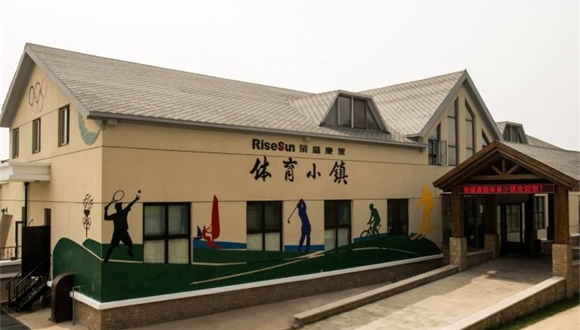"Sports towns" is the new buzzword emerging in China during the past few years. It has become an even more heated topic in the Chinese sports industry, as the national sports governing body in China released its first 96 pilot projects for sports and recreation towns on August 9th.
In fact, China has achieved an initial success, as revealed in media reports. The number of sports towns that have been built or are under construction has reached 81 across 25 Chinese provinces and cities by the end of 2016, and is expected to grow to 300 by the end of 2017.
Driven by the number of participants and consumer habits, most of the sports towns are outdoor sports-based while others feature winter sports, football, and cycling. The sports towns are usually operated by local governments or companies.
Typically, a sports town needs an average of 2 billion RMB in investment, not including real estate investment. Therefore, most of its investors are wealthy real estate or sports companies.
For example, Lander Sports, formerly known as Lander Real Estate, has announced plans to build a 6 billion yuan sporting town and athletic complex in the coastal city of Yiwu. As disclosed in a recent filing to the Shenzhen Stock Exchange, the company, together with the Yiwu government, is looking to spend 4 billion Yuan on building a sports town, and another 2 billion on supporting facilities.
As Lander Sports President Gao Jisheng said at a recent workshop: “The basis of sports industry is the physical environment, without which which it would be impossible to make any achievement in sporting events, sports training and even the sports industry as a whole.” To create a sports town and athletic complex, so to speak, is to set up the necessary physical environment for a country’s sports industry.
As of now, about 20 Chinese real estate businesses have announced their expansion plans for sporting towns. However, China should stay alert to prevent some fraudulent investors from creating a new property bubble. That is to say, a sports town is supposed to drive the growth of local economy, but the profits should be made through the commercial revenue from public fitness and health, culture and tourism.
How then do sports towns maximize return on investment (ROI)? “When you are planning to build a sports town, you should first and foremost show respect for local economy, culture and community. Then you can choose a distinctive theme in your plan. So you can finally combine ideas of sports tourism, sports training, business and trade with your project of a habitable and profitable town.” Added Gao, who is understood to have bought around 80 percent of the club Southampton FC from its Swiss owner.
Yiwu Deputy Mayor Luo Xiaojun sees sports as a focus of their future development. Yiwu was an unknown town twenty years ago, but has turned into the largest hub for commodities and one of the busiest cities in China. However, it is yet to keep pace with large first-tier cities in the sporting business. That’s why the city aims to carry out its sports town plan, to create a multi-billion-yuan sports industry in five years.
Some investors have shown their patience in the clause. In a recent Yutang interview, Fan Jizhi, President of Yunnan-based Anning Tongsheng Thermal Spring Operation Company, said that this should be seen as a long-term investment for those who want to be involved in the construction of sporting towns.
Partnering with the local government, Fan’s company is aimed to build Anning City of Yunnan Province into the Chinese version Roland Garros. As a result, their project has been listed in the first 96 pilot towns announcement.
“Because of the uncertainties in investment and the fading of Anning real estate industry, we have been losing money in our tennis investment recently. The good news is, the local government has provided more support for us in recent years, which encourages us to continue our plan for building a tennis-based sports town.”
According to China’s five-year plan launched in 2016, the country is expecting that by 2020, the total scale of its sports industry will be more than three trillion yuan ($463.7 billion), accounting for one percent of its GDP. Naturally, the idea of a sports town has become an important part of this ambitious goal. Since a sports town cannot built in a day, China is boosting its sports industry step by step.
Proofread by William Logsdon
